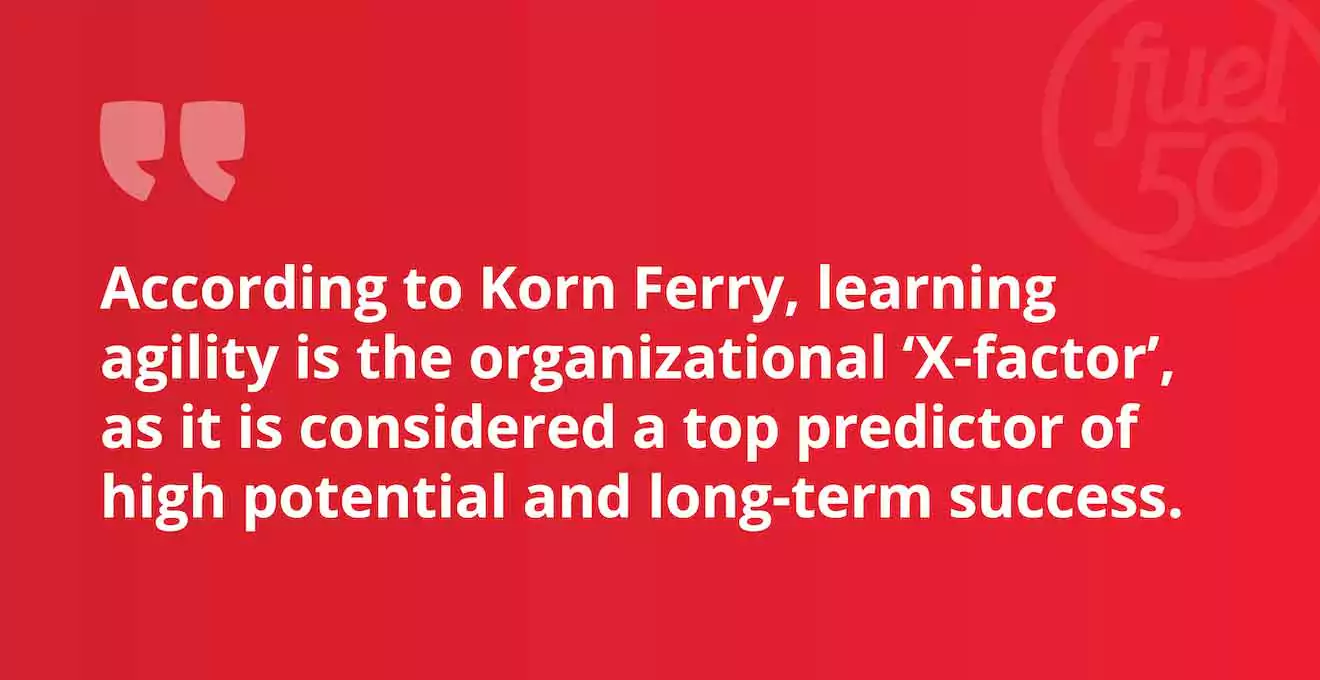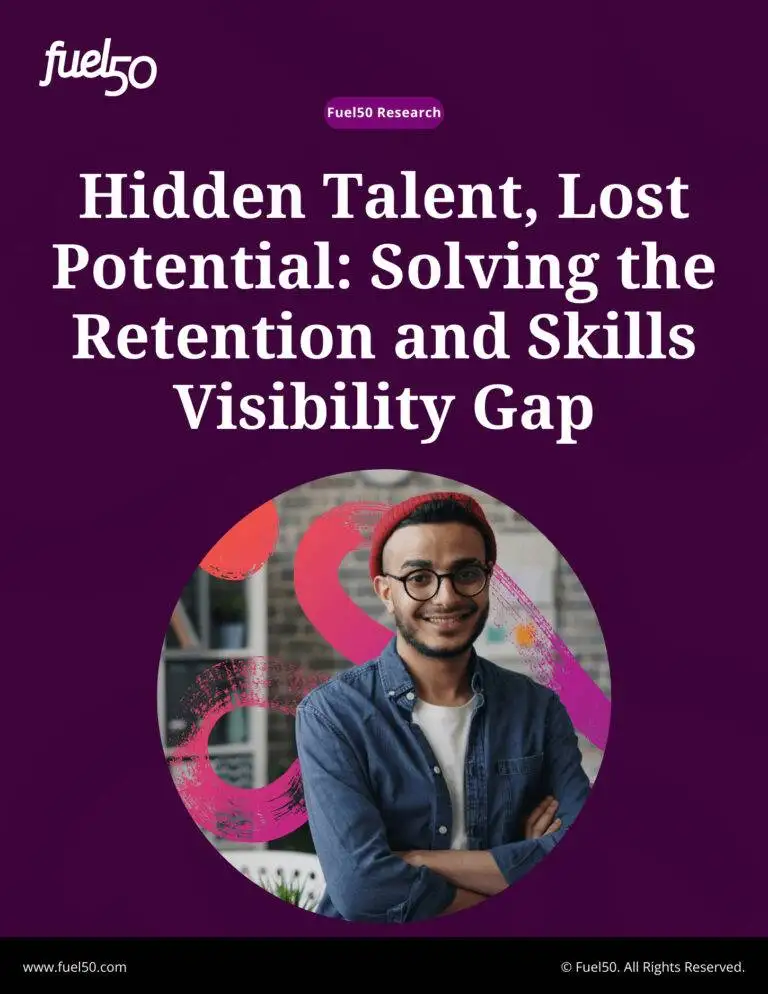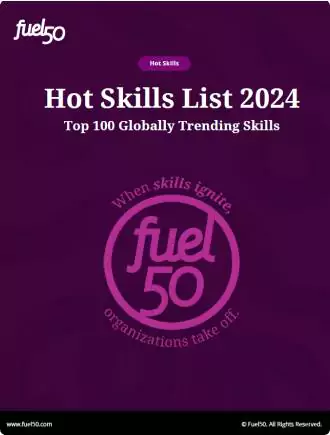Originally published on Inspiring Workplaces. Written by Anne Fulton, CEO and Founder of Fuel50 – the Intelligent Talent Marketplace powered by Skills, Insights & Architecture.
Change is one of the only constants in today’s fast-paced work environment. Instead of fearing it, we must embrace it and master how to navigate it with confidence. Learning agility is the perfect illustration of how to do this, defined as a “combination of skills that enables a person to learn, relearn, and adapt to changing situations.”
These skills are in high demand today as workforce agility continues to be a top priority for future-focused organizations. Without agile and passionate learners, organizations lack the agility they need to tackle current and future challenges. Encouraging and promoting learning agility within your workforce is a foundational building block to becoming an agile, future-ready organization.
Learning Agility Drives Innovation, Problem-Solving & Efficiency
As technology, business needs, and workforce challenges continue to evolve, the skills employees need to do their jobs efficiently and drive organizational success are also changing. If employees are incapable of learning and adapting new skills, the organization becomes unable to pivot operations to accommodate shifts in the market.
Korn Ferry says that learning agility is the organizational ‘X-factor’, as it is considered a top predictor of high potential and long-term success. Their research found that companies with highly agile executives have 25% higher profit margins than their peers and are 5x more likely to be highly engaged.
Global situations such as the pandemic demonstrated just how critical it is for organizations to be able to adapt to change. We must continually find new ways of working to keep up with the times and remain competitive. Organizations that acknowledge this and facilitate agile learning will nurture employee innovation, problem-solving, and efficiency – elements that are imperative for success in today’s volatile environment.

What is Learning Agility and How Can Organizations Foster it?
At its core, learning agility is all about learning from previous experiences and applying them to new situations. It is often coined as ‘knowing what to do when you don’t know what to do.’ Why? Because it encourages us to think of new solutions, calling on our past and present experiences during times of uncertainty and unpredictability.
According to Harver, examples of learning agility in the workplace include:
- Adaptability. Being able to embrace change and easily adapt to changes within the market.
- Flexibility. Open to new ways of working and being optimistic about change.
- Experimenting. Trying out new methods, processes, and behaviors to determine what is effective.
- Better decision-making. Able to make decisions with confidence by connecting the dots and looking at the bigger picture.
- Innovation. Focused on generating new ideas and proposing new solutions.
Learning agility is a skill we can build over time. It can be exercised in many ways such as through learning opportunities, skill development, and mentorships. Here are a few ways to foster agile learning within your organization:
1. Offer Learning and Career Development Opportunities
Learning agility encourages being in a constant state of growth by continuously seeking learning opportunities and ways to develop skills. Fostering this type of learning requires organizations to provide opportunities for career growth and development. This can be through internal opportunities such as short-term projects, gigs, and learning programs.
A key component of this is career visibility. Research by Cornerstone found that employees who do not have visibility into internal career opportunities are 61% more likely to quit their job. Employees need a clear developmental path to remain motivated to continue learning, developing, and succeeding in their roles. Providing career visibility enables them to envision a future within the organization which ultimately helps improve employee retention and increase internal mobility.
2. Personalized Upskilling & Reskilling Initiatives
Gone are the days of managers dictating an employee’s career path. Employees want to be in control of their own careers and seek agency over their learning experiences. Organizations must support this by providing personalized upskilling and reskilling plans that are aligned with employee interests and goals, as well as organizational objectives.
HR leaders can take this further by connecting learning opportunities with skills gaps across their workforce. Technology like Fuel50’s Learn+ integrates the Talent Marketplace with Learning Platform Solutions to deliver personalized, career-focused learning recommendations that close skill gaps, unlock new opportunities for growth, and empower employees with the in-demand skills they need to succeed.
This kind of solution addresses both employee and organizational needs which is essential today. Employees feel supported to grow in their careers, and the organization can build high-demand skills it can leverage and deploy as needed. This generates higher levels of innovation and supports workforce agility.
3. Support Feedback and Mentoring
An often overlooked component of learning is feedback and evaluation. Giving employees the opportunity to offer and receive feedback provides an outside perspective on their strengths and areas of improvement. A strong mentorship culture can also help by creating an environment that encourages collaboration and peer learning.
This improves job satisfaction and employee retention as it motivates and encourages employees to seek growth experiences and learn from others. They can connect with others across the business who have varying levels of experience, strengths, and exposure, enabling employees to learn from people with different perspectives and backgrounds.
Agile Learning Builds an Agile Organization
Don’t underestimate the power of learning agility. An organizational culture that fosters it encourages a renewed mindset – one that perceives change as an opportunity to learn and grow, rather than a hindrance. The world of work is ever-changing, so embedding agile learning practices now will set your organization up for the long term, solidifying its ability to drive success through change, uncertainty, and turbulence.
Understanding the most effective HR strategies, trends, research, and practices is essential for organizations to thrive in today’s fast-paced environment. Keep up to date with Fuel50’s latest learnings and research here.











